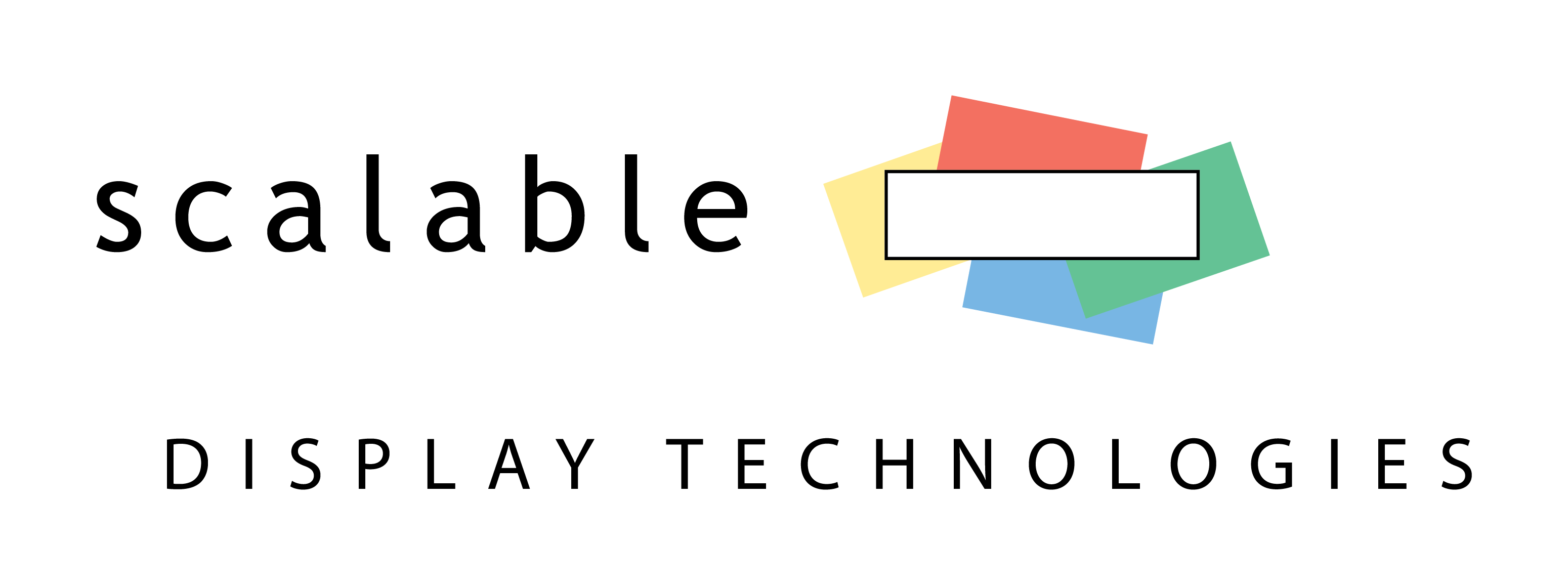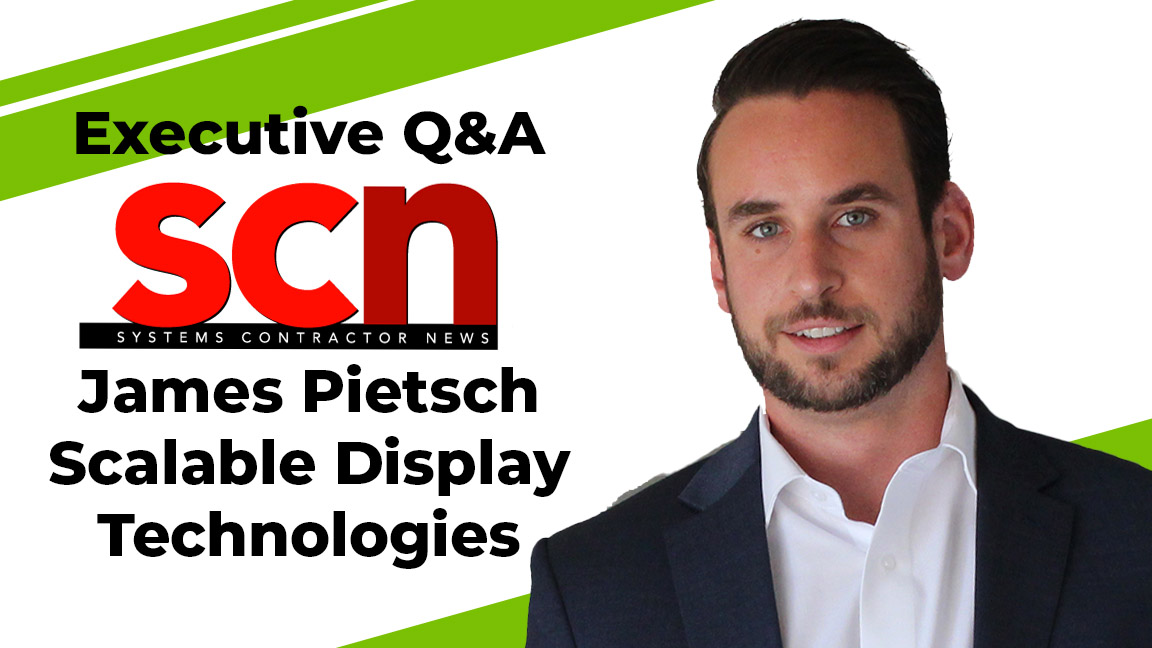SCN: How long have you been with this company, and what are your responsibilities?
James Pietsch: I got involved with Scalable right out of college. A friend of mine was interning there at the time, and things moved quickly. I graduated on a Tuesday, met with the CEO that Thursday, and started the following week. I've been with Scalable for over 14 years, and my responsibilities revolve around everything customer-facing. My focus is on maintaining strong relationships and overseeing the entire customer journey.
[Executive Q&A: Custom Cables and Beyond]
SCN: What is the technology that put Scalable on the map?
JP: Our initial patents for camera-based calibration, developed at MIT in the early 90s, really put Scalable on the map. When Scalable was first founded, this technology didn't exist, and multi-projector, multi-display setups for large-format displays were extremely complicated—almost a black art at the time. These kinds of systems were limited to niche industries, like VR caves or flight simulators, and were incredibly complex to implement. That core patent and capability gained significant attention in our early days and set the foundation for our success. Since then, we've expanded our products and projects in ways that have kept us on the map, moving beyond the original technology while continuing to innovate.

SCN: Many of today’s projectors have built-in edge blending tools, so what’s the selling point for Scalable’s solutions?
JP: Manual warp and blend tools have been around for a long time. Still, the real value of Scalable lies in simplifying the setup process, extending system longevity, and improving accuracy by leveraging camera-based calibration. Most importantly, Scalable ensures that the display continues to look its best long after installation. When you rely on the projector’s built-in tools for manual alignment, it requires taking the display down, spending significant time and having a trained professional who understands those tools. Scalable eliminates those challenges by automating the process with a camera, making it faster, easier, and more reliable.
[Viewpoint: Welcome to the New Era of Live Events]
SCN: Is edge blending a sort of set-it-and-forget-it technology or do clients need to manage their displays?
JP: Blended displays are dynamic systems that require ongoing maintenance. By their nature, multi-channel setups must address issues like projectors drifting out of alignment over time. It's inevitable that projectors will slowly come out of alignment, which creates a maintenance problem and can incur additional costs after the project is already commissioned.
That's where tools like Scalable come in. We make realignment fast and simple—about 30 seconds per projector with just the click of a mouse. There are no ladders and no disassembling of the display. This allows clients to maintain their displays daily with minimal cost and complexity, ensuring optimal performance over the long term. That's the true advantage of auto-alignment technology.
SCN: What are the biggest vertical markets for Scalable?
JP: Our biggest vertical market is modeling, simulation, and training. This spans a wide range of industries, including automotive, Formula One, maritime simulation, defense and military, fast jets, and more. It's the core market we serve. The second-largest market is museums and attractions, where we help create immersive experiences. The third key vertical would be AR/VR, focusing on the next generation of caves and virtual production sets. While these are a different category of displays, they still benefit significantly from auto-alignment and pixel-perfect precision.
SCN: How important has edge blending become in today’s immersive simulation environments?
JP: Edge blending has become absolutely essential in today’s immersive simulation environments. As immersive experiences grow in demand, tiling multiple projectors is key to achieving that level of immersion. A single 16:9 projector is inherently limited in creating a truly immersive experience. With Scalable, there’s no limit to the number of projectors you can use or the shapes you can create.
SCN: How does Scalable Atlas help with projection mapping projects?
JP: Scalable Atlas is our first 3D projection mapping software, designed to handle any shape or object, whether it's a statue, the façade of a building, or other complex geometries. What makes Atlas unique is its ability to automatically calculate projector positions in 3D space with incredible accuracy. It then creates warps for each projector based on those calculated locations. Our core products are optimized for specific screen types, while Atlas is versatile and not restricted by geometry, making it ideal for a wide range of projection mapping projects.
SCN: How are ScalableDesktop and Scalable Display Manager different?
JP: ScalableDesktop is designed for single-PC solutions. It allows you to warp your Windows desktop, enabling you to run any Windows application seamlessly across multiple projectors, whether it’s Windows Media Player, PowerPoint, CAD applications, or even virtual walkthroughs of a building. As long as it's Windows, it works.
Scalable Display Manager is more complex and supports advanced system architectures. It’s typically used in host-client environments with multiple rendering PCs or integrated with third-party media servers like 7thSense and Pixera. Scalable Display Manager offers greater flexibility, more ways to apply mesh files, and the capability to address a wider variety of system types compared to Scalable Desktop.
SCN: How has Scalable been celebrating its 20th anniversary?
JP: We've had an absolutely incredible year, so it feels like the market has been celebrating our 20th anniversary even more than we have—which is a great way to celebrate! Internally, we've had a few company events and parties, including a big end-of-year holiday celebration in December. We also released version 11 across the products as we continue to focus on reinvesting into the business and improving our client experience.
SCN: What new initiatives are we likely to see from your company?
JP: This year, Scalable is focused on enhancing our core products while introducing new software tools to streamline the workflows of our partners. One exciting initiative is the addition of a design capability that allows partners to validate system designs before installation. The design capability will integrate directly with our calibration software, enabling customers to arrive on-site with a pre-populated, ready-to-use calibration setup tailored to their system. We’re also introducing new control software called Commander, which will give customers the ability to manage hardware and software—from projectors and PCs to calibration tools—through a single, user-friendly interface.

